Shell Life
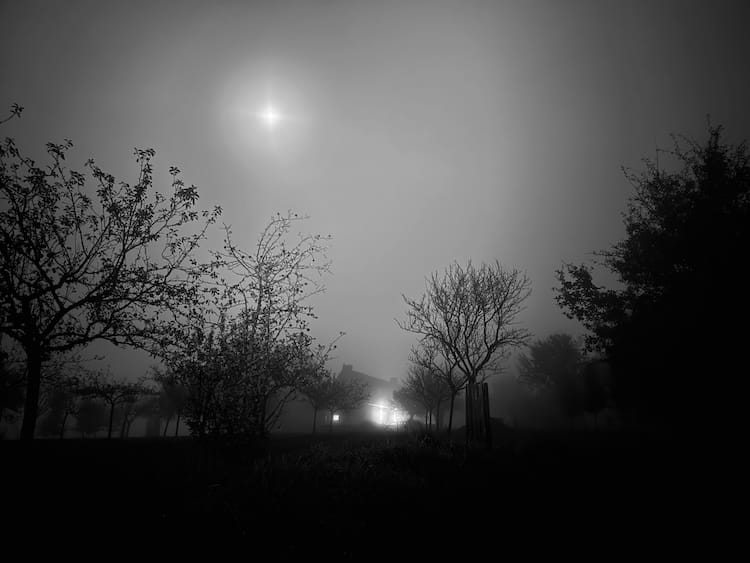
Friday, 22 November
For the last few weeks, since the 6th of November to be precise, I have had a physical urge to put my head down and pull it into hunched shoulders, to retreat into a shell.
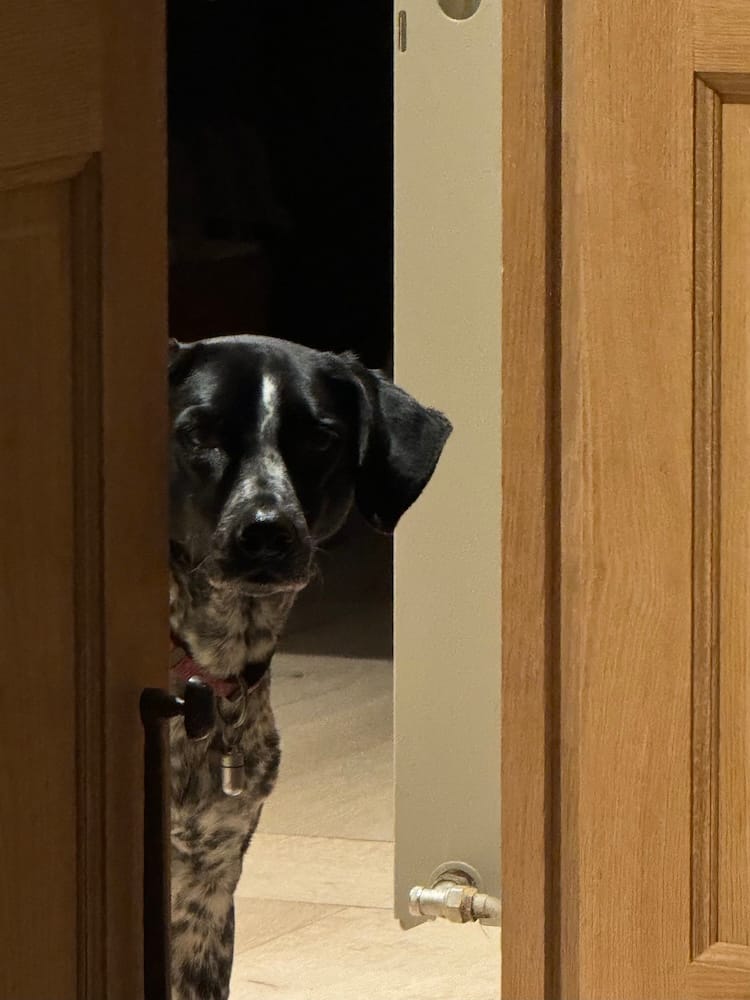
Fortunately it has been relatively easy for me to indulge this reptilian impulse. For the last week, alone with Tasha in the Perche, I have been able to funnel my attention into fiction* and photography.
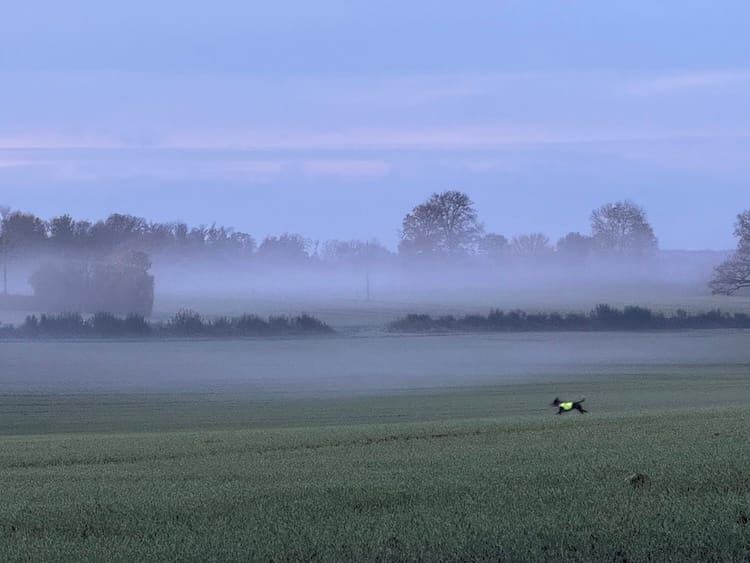
The clammy, grey skies I wrote about last time have persisted doggedly, with only a very occasional glimpse of the sun, but autumn has nevertheless been on full display. With its mustard yellows and russet reds, it’s less theatrical than, say, New England’s thrilling fall. But this year I find the muted tones comforting rather than disappointing.
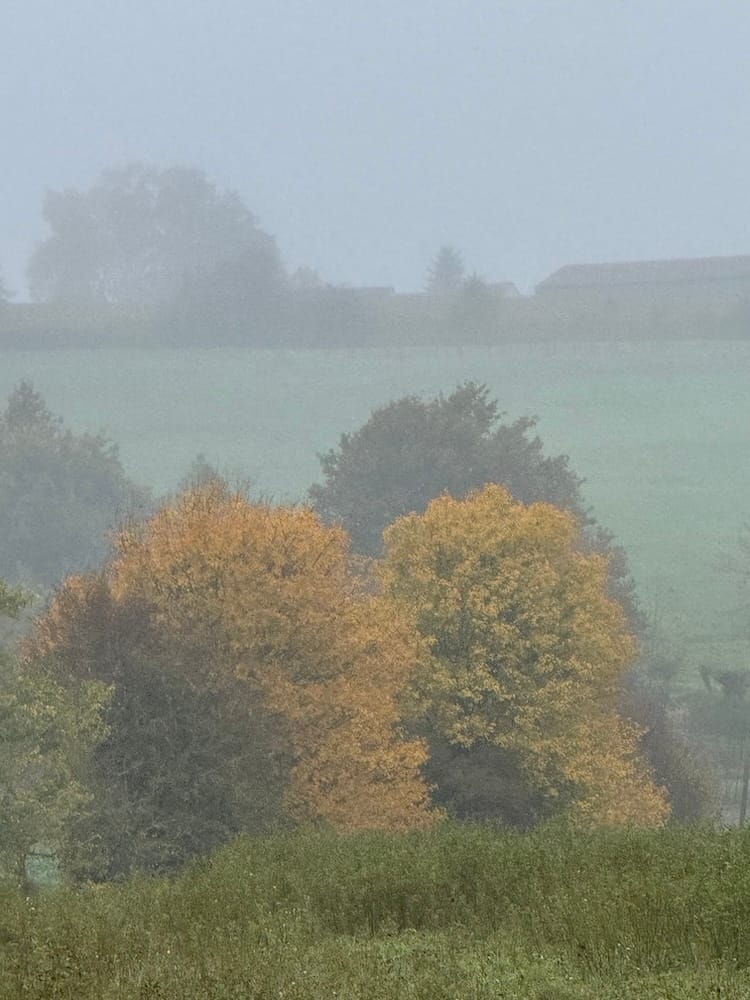
And we’ve had our spectacular moments. The clouds have often lifted at night and allowed a brilliant moon to illuminate the landscape, in this case (top photo and below), through the fog.
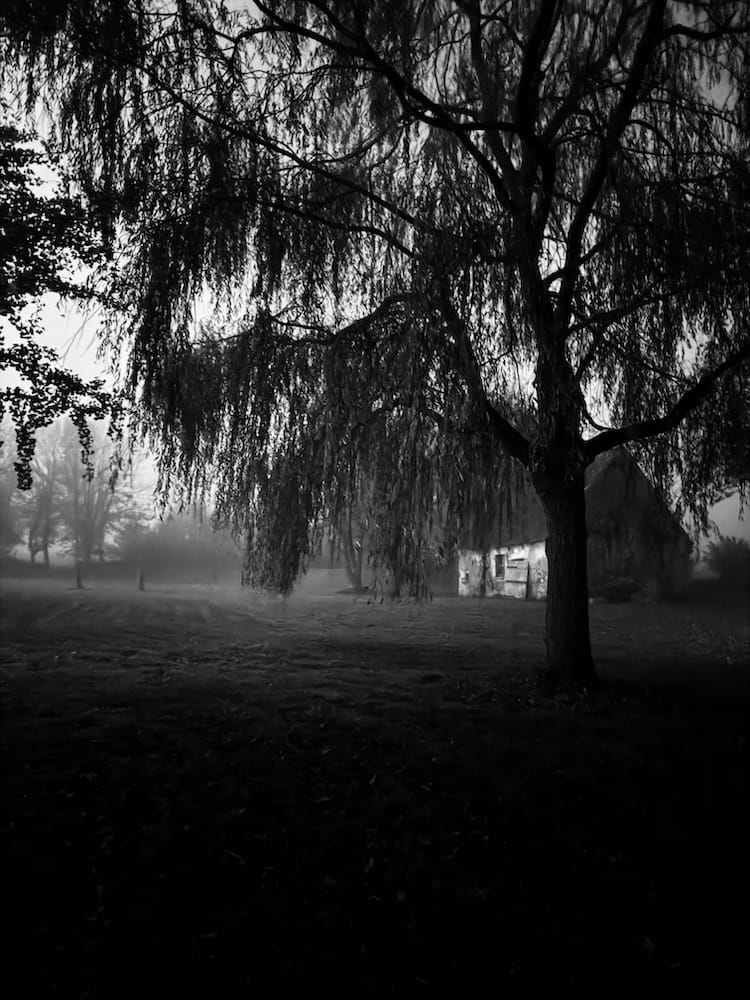
That being said, I really didn't need to go any farther than my office chair for distraction. Between my current novel project* and the gingko tree I see through the window, my attention has been sufficiently redirected. Leaves have been getting yellower...
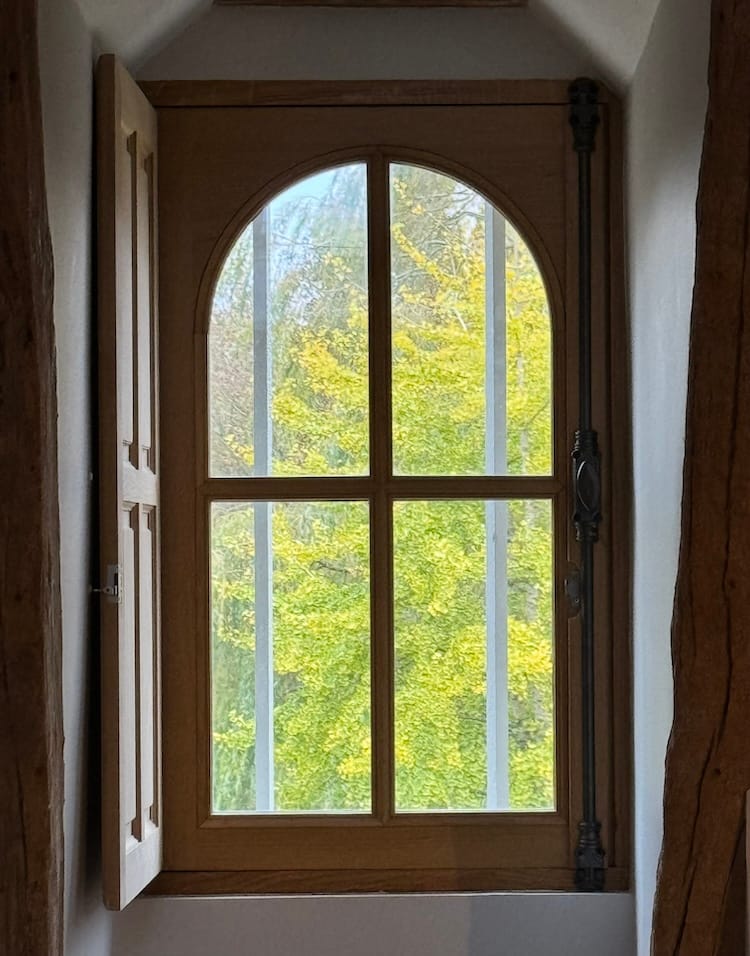
...and yellower...
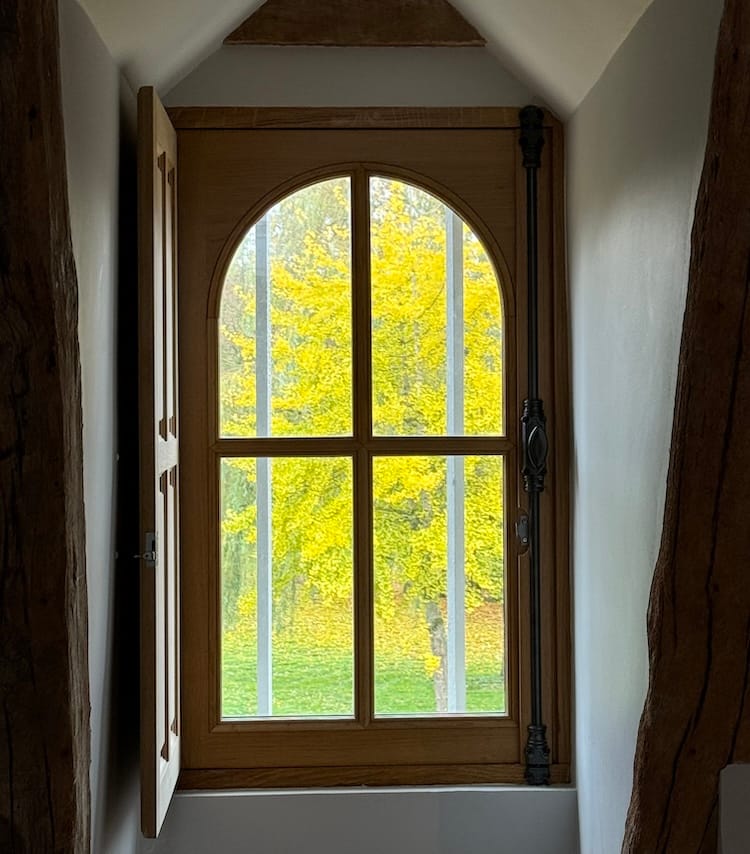
Gingkoes have a special place in my heart. They are so exotically elegant, the shape of their leaves so singular. They are also, I realised not long ago, a recurring theme in my life.
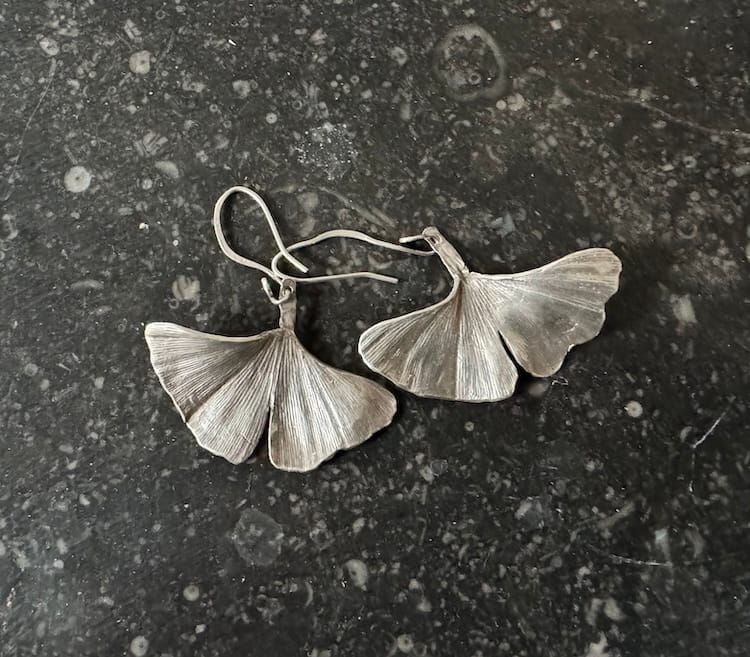
It was our green guru Claire who first noticed the earrings I'd recently bought at a crafts fair here in the Perche, who then gave me a jug with a gingko leaf motif and planted three saplings between the house and the tree I see out my office window.
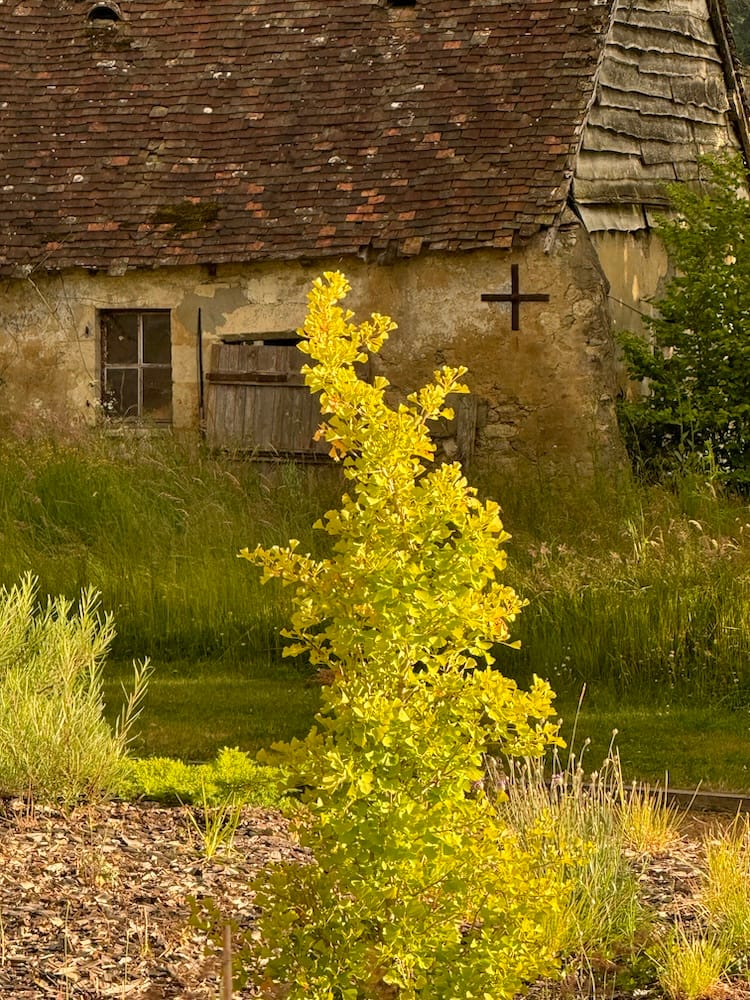
Once I was aware of the attraction, I remembered its origins. My first encounter was in Chicago's Lincoln Park. We were given a school assignment to collect leaves and stick them into an exercise book. It's the only leaf I remember, and it was that project which led me pick up a gingko leaf in Berlin many years later and tape it into my journal, then include it in a blog - even though at the time I had apparently, incredibly, forgotten the name.
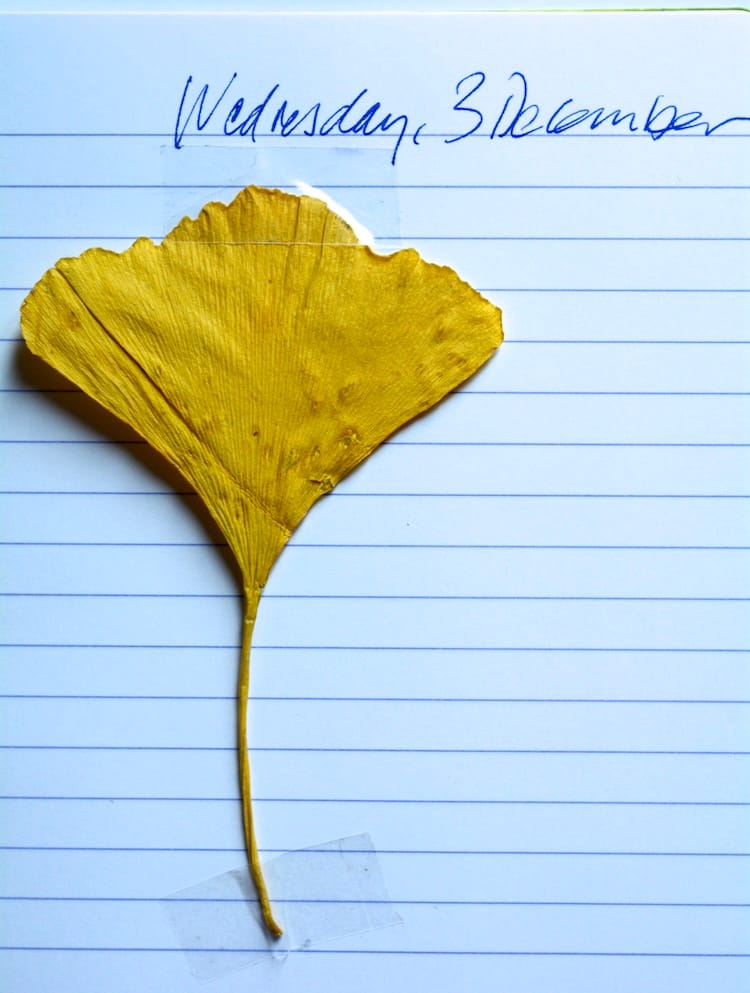
Which is strange because I have a pre-Berlin memory of walking down a street in Washington, DC with my friend Andrea and her pointing out to me a female ginkgo and telling me how bad its fruit smells and my conflating stink and gink(go) and thinking what a shame, they're so lovely.
I was therefore delighted to learn from Claire about the male gingko at Deux Champs and to encourage the planting of others. Last summer, when we thought one of the saplings had been killed by the insatiable bark-eating deer, I bought a replacement, then felt so sorry for the other one still lashed to a metal fence at the plant store that I bought it too.
Originally from China, Ginkgo biloba have a strange and wonderful history. Gingko is a misspelling of either the Japanese gin kyo (duck foot, like the shape of the leaf) or the Chinese yin kuo (silver fruit) by Engelbert Kaempfer, the 17th century botanist who introduced them to Europe. Biloba, added by the taxonomist Carl Linnaeus, refers to their two-lobed leaves.
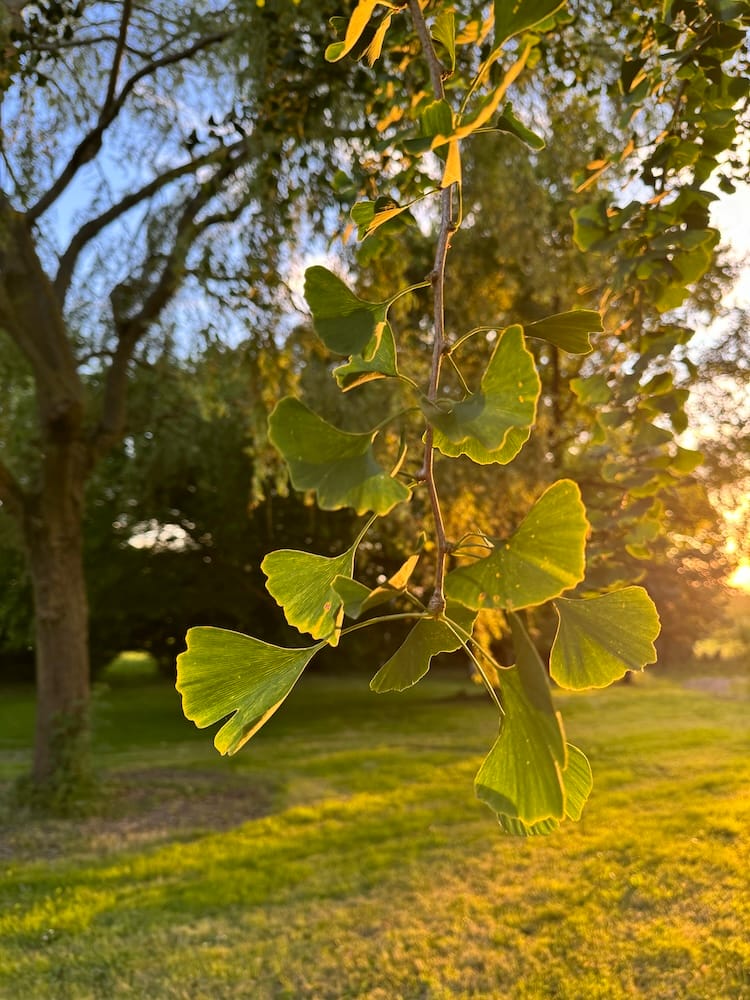
Though deciduous and looking nothing like a pine, they too are gymnosperms (ie, plants whose seeds are not protected by an ovary or nut). Traditional Chinese medical practitioners and herbalists believe that they can be used to treat inflammatory conditions and dementia, but this remains unproven by science.
Direct descendants of the Ginkgoales that inhabited the earth 300 million years ago, ginkgoes have the rare distinction of living fossil (the way I increasingly feel, so I hope the Chinese and herbalists are right). Very few now grow in the wild, and the species would likely have gone extinct if Chinese monks had not considered them holy and planted many next to their temples.
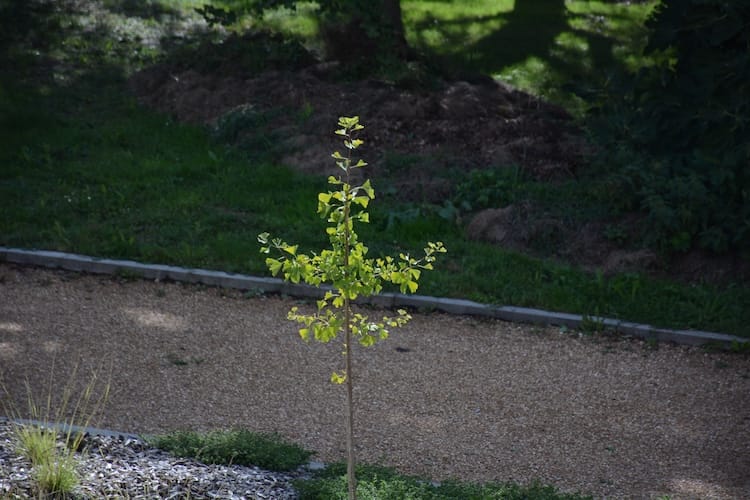
Once alive, however, it's hard to kill them. In Asia, there are trees over 1000 years old, and at the end of World War II ginkgoes proved more resistant to radiation than humans. Six that survived the bombing of Hiroshima are still alive and healthy today. The one we gave up for dead in our garden but popped in a pot just in case, started sprouting leaves from its severed trunk and appears to be thriving.
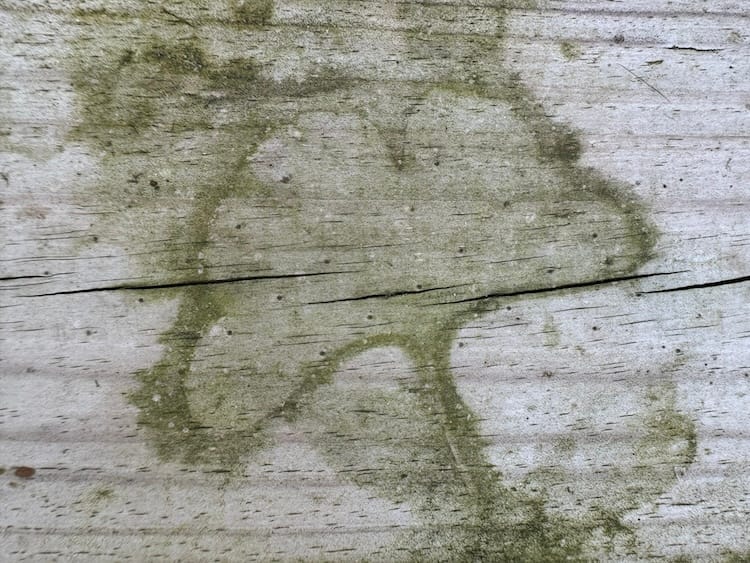
In fact, according to Dr Wikipedia, a recent Chinese study concluded that ginkgo trees as old as 667 years old "showed little effects of ageing, [found] that the trees continued to grow with age and displayed no genetic evidence of senescence, and continued to make phytochemicals [the plant equivalent of antibodies] indefinitely."
That we should all be so lucky.
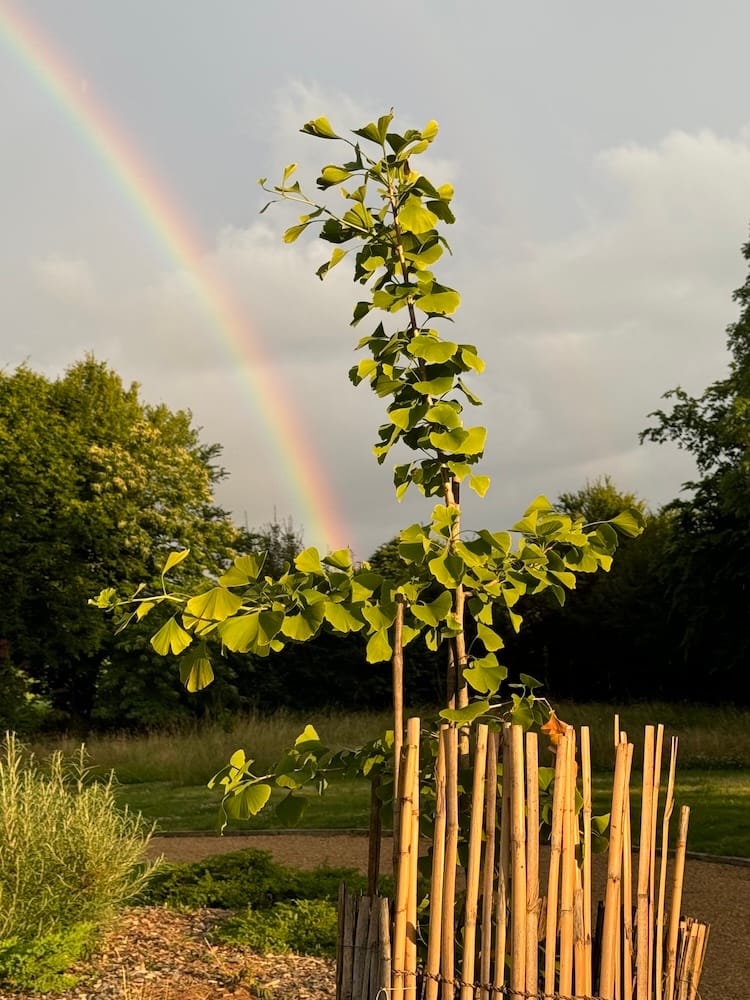
Yesterday it snowed and snowed. A scarily fierce wind came up late afternoon. On this morning's walk, there were branches down everywhere; two fallen trees blocked my path; a neighbour's horse chestnut has splintered like kindling and the top of a poplar (the one on the right, below) that marks the edge of our property had been snapped off.
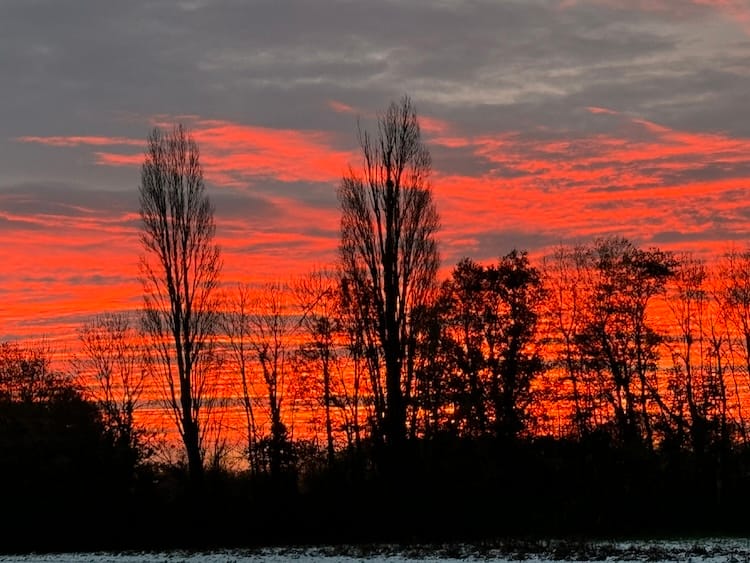
Our ginkgo lost its remaining leaves...
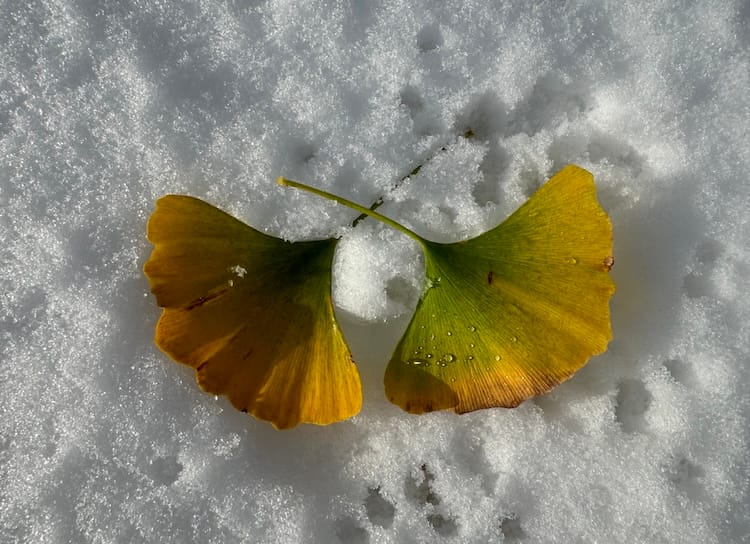
...but otherwise weathered the storm. We'll see how the rest of us do these next four years, if not beyond.
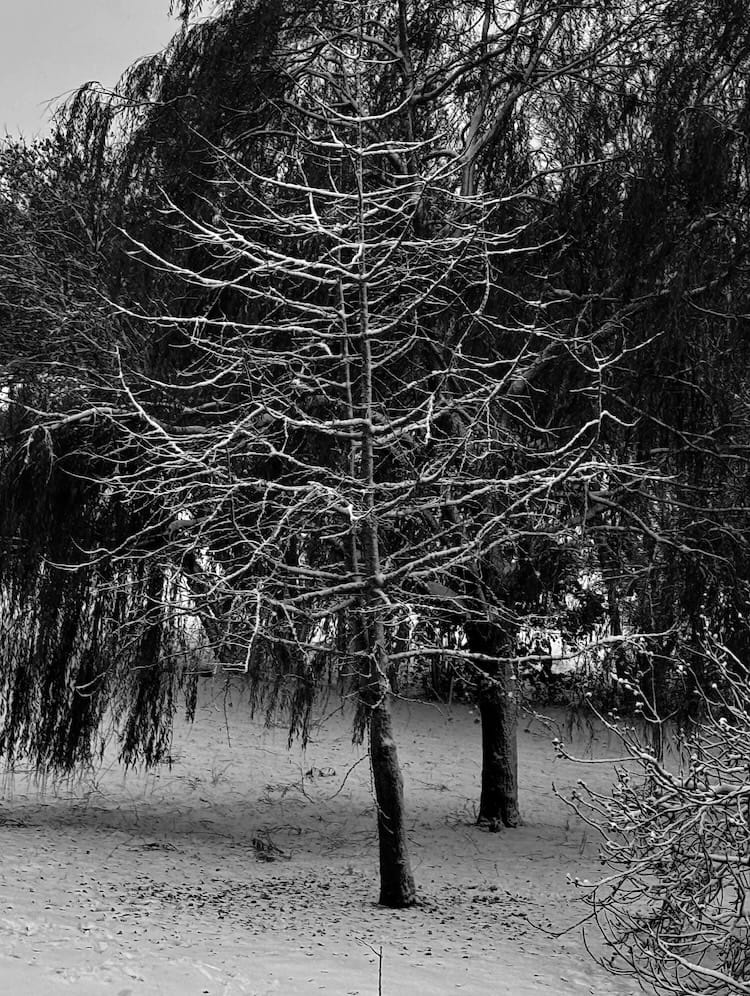
*I'll write more about my current fiction project another time, but while we're on the subject: Christmas is soon upon us and why not stuff someone's stocking with a copy of Civilisation Française ?!